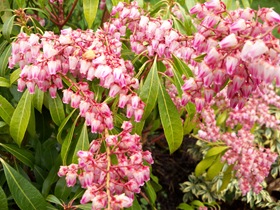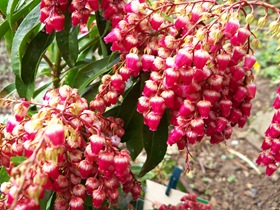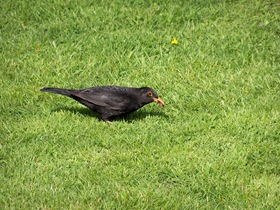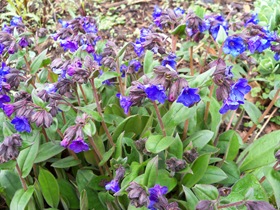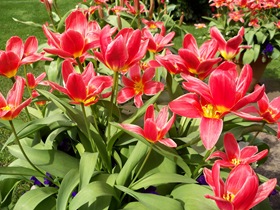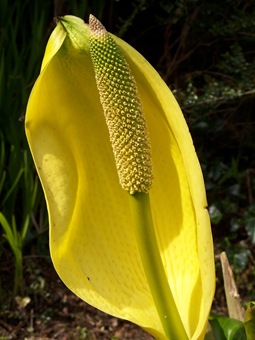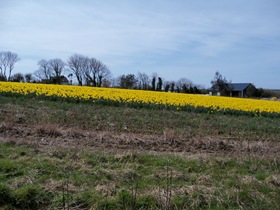Some areas of the countryside are having trouble wit Stinging Nettles (Urtica dioca). It's all down to over application of Nitrogen on farmlands.
Nettles love Nitrogen rich soils and are good indicators that a soil has plenty available. Unfortunately over application encourages a super abundance of Nettles at the expense of other specie of wild flowers. Having said that many wild flowers cannot themselves take high Nitrogen within the soil, many needing more poorer soils to thrive properly.
Anyhow the Nettle thrives where ever Nitrogen is in abundance. This can sometimes be seen within old woodlands. A patch of Nettles healthy and abundant. The conditions for this having been brought about sometime ago when woodlands were utilised by being coppiced and worked by woodsmen and bodgers.
These men would often set up temporary shelters within the wood and stay for several weeks as they worked the patch. Of course they had to use an area as a latrine. Hence the abundance of Nettles in patches within older woodlands. The Nitrogen from times past forever recycled by the plants.
We had our first meal of Nettle greens, a treat we always look forward to in Spring. Nettles as a Spring green have for possibly thousands of years been utilised for their restorative health boost after a Winter of lack. Rich in Vitamin C, Beta Carotene (Vitamin A), Iron, Magnesium and a host of other trace elements, they are something that should not be missed.
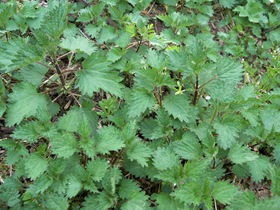 A patch of Nettles perfect for picking.
A patch of Nettles perfect for picking.
Nettles are an easy Spring green, though picking them you are advised to wear gloves. Pick the new shoots, or cut them of with scissors. Pick plenty as they are like spinach and reduce in size on cooking.
Pack them into a saucepan with a lid after washing them off in a colander. Add enough water to adequately cover the bottom of the pan, but not too much as Nettles are better steamed.
Cook over a fast heat until they are tender and soft. Not one sting will have survived the heat.
Our favourite recipe is simple, sprinkle with soy sauce and drizzle a drop of Organic Extra Virgin Olive oil on to them.
In the garden Nettle are valuable to wildlife acting as food to many animals and insects. Here in Britain up to 40 different Butterflies depend on the Nettle and many birds eat the seeds at the end of Summer.
We have numerous patches of Nettles around the garden and intend to have more. One way is to grow some of the rarer garden forms, yes there is such a thing. I managed to find myself a supplier last year and bought three plants off her.
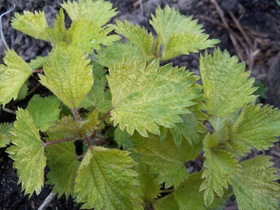 Good As Gold forms a neat clump of lovely golden foliage.
Good As Gold forms a neat clump of lovely golden foliage.
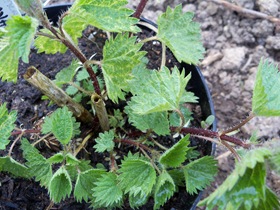 The Nettle Danae Johnston will form a plant with foliage mottled and flecked cream.
The Nettle Danae Johnston will form a plant with foliage mottled and flecked cream.
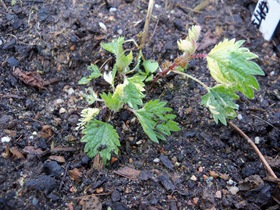 Brightstone Bitch has white variegated foliage. Something I have wanted for a long time. The plant is small and needs nurturing.
Brightstone Bitch has white variegated foliage. Something I have wanted for a long time. The plant is small and needs nurturing.
All these plants I got from Rosemary Castle at Alternative Plants. Have a look at nettles.org for more information on Nettles.

